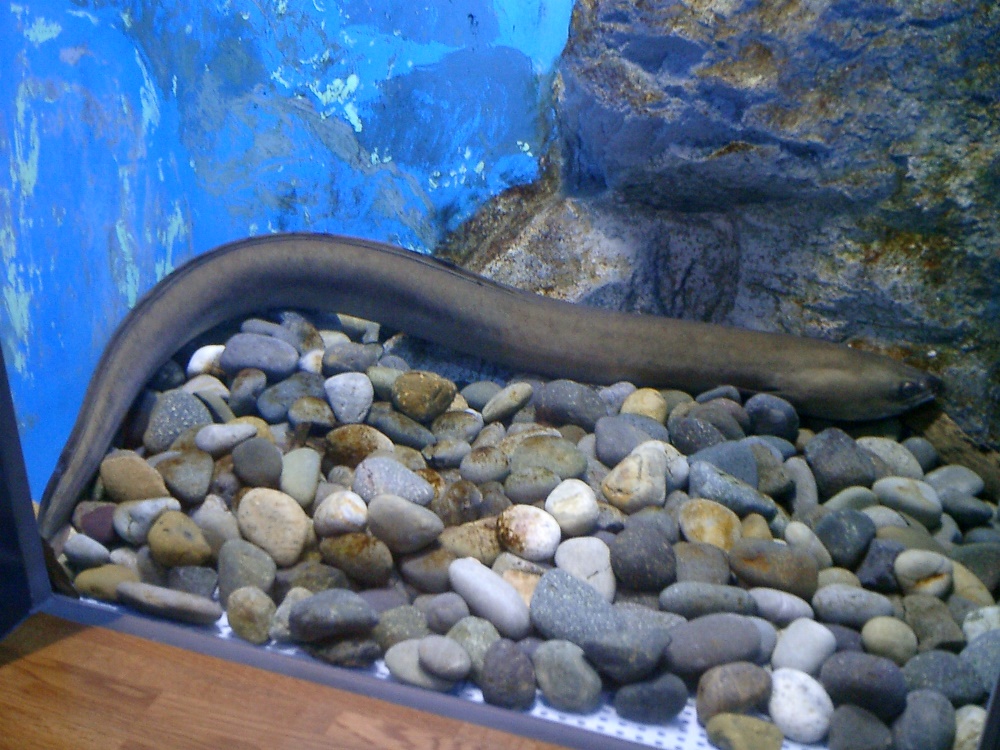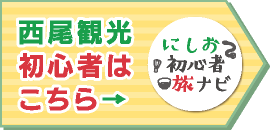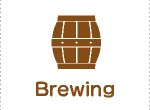Nishio City’s famous food products
Nishio’s Matcha
- Nishio City is famous as one of Japan’s leading matcha producing areas. It features a deep green color unique to Nishio Matcha, a luxurious aroma, and a pleasant rich taste. Nishio Matcha can be enjoyed at many teahouses, cafes and restaurants in Nishio City. Popular sweets using matcha are matcha parfait, matcha shaved ice, matcha cake, and matcha Japanese sweets. In particular, the matcha served at the Former Konoe Residence in Nishio City Historical Park is exceptional, and you can enjoy it while enjoying Japanese culture.

Nishio City History Park
(Former Konoe Residence)
(Former Konoe Residence)
Make a tour of matcha factory,
hand grind tea leaves with a stone mill,
make tea and enjoy your own brew.
hand grind tea leaves with a stone mill,
make tea and enjoy your own brew.
Nishio Unagi (Eel)

- Savour the fragrance of one of Japan’s classic dishes: Unagi, barbecued eel.
To the Japanese, unagi is a specialty handed down by their ancestors from the days of the Manyo, in the eighth century. Unadon, grilled eel on a bowl of rice, is one of the dishes chosen as Classics of Japanese Cuisine.
The certified quality of Isshiki’s eel has made it the pride of our city. Along with Nishio matcha, it is one of Nishio’s top-class regional brands.
All around Nishio, you can find restaurants specialised in unagi eel dishes. Please visit one of them, and try our Isshiki Unagi!
Seafood in Mikawa Bay
 Seafood Kaiseki cuisine
Seafood Kaiseki cuisine- The Yahagi River creates fertile land. Mikawa Bay, which connects to the Pacific Ocean, is a treasure trove for seafood. Nishio City is blessed with an abundance of marine products in a wonderful natural environment. Eel and clams boast one of the largest production volumes in Japan. Ebi senbei(cracker) made from shrimp of Mikawa Bay. Many dishes made from fresh seafood in Mikawa Bay present the heart of Japan. Please enjoy it once.
Miso

- For more than a thousand years, miso made from whole soybeans has been a staple of Japanese home cooking. The kind made in Nishio does not contain rice, wheat, or barley and is called akamiso, for the reddish-brown color of the pure soybean-paste after its long fermentation period. It is a specialty of the Mikawa region, and greatly prized for its deep flavor and use as a preservative.
Miso used to be made in the family, the true “taste of home”. But with the economic expansion of the Edo period, some kinds of miso became more popular than others and their use spread nationwide. Nishio’s red miso is renowned for keeping its aroma even when it is boiled and for rounding out the taste of other ingredients in cooking. In recent years, people are becoming more aware of the nutritional value of soy products like miso and it is even attracting attention as a health food around the world now.
Because miso is a fermented food, traditional miso makers are often called jōzō – breweries – in Japanese. There are three of them in Nishio.
Miso brewery
Soybean Miso Dishes

About “Nishio HOSE”
Part of Mikawa such as Nishio City, They call skewers “HOSE” in their dialect
For examples, there are Dengaku and Gohei mochi Typical Hose food Is “Dango”, and Mitaíashi dango is common. “Mitarashi” is made by baking sweet and spicy bean paste of brewed soy sauce and sugar on dumplings.
Saké

- According to records at Mikawa Sakami Shrine, Aichi prefecture’s saké brewing history goes back over a thousand years; since long ago delicious saké has been made using the Yahagi river’s clear stream and good quality rice cultivated in the region’s rich soil.The popularity of Aichi’s saké was encouraged by Mitsutomo Tokugawa, the second feudal lord (daimyo) of the Owari clan during the Edo period. In search of a larger market, sales channels were also expanded into Edo (modern day Tokyo) with great success. At that time, because of its high alcohol content Mikawa saké was popularly known as ‘oni o mo yowasu’ (“even gets demons drunk”) and ‘oni koroshi’ (“demon killer.”)
It is thought that the saké of their hometown made the people from the Mikawa and Owari regions living in Edo, including shogunal vassals feel nostalgic.Finally, it is said that Aichi saké took the saké world by storm and became as popular as Nada’s (Hyogo prefecture) ‘otoko shu’ (“mens’ saké.”)
Today, in this region’s blessed climate and natural features, chief saké brewers and saké breweries still remain, they continue to polish their brewing techniques and strive to improve the quality of their products; and their painstakingly made delicious saké continues to inebriate people throughout Japan still.
Nishio City Brewery Introduction

- Sonnoh Brewery, which has been dedicated to making saké since its establishment in 1903, uses more than 95% saké rice cultivated in Aichi prefecture, and is committed to using locally grown products.
“When it comes to kinds of saké rice, Yamada Nishiki from Hyogo Prefecture is common, however, we continue to follow our former company president’s belief, as he once said, ‘Let’s make saké with fine quality saké rice cultivated in Aichi prefecture and put its special characteristics to good use.’” This story represents our roots as a local brewery.





























































